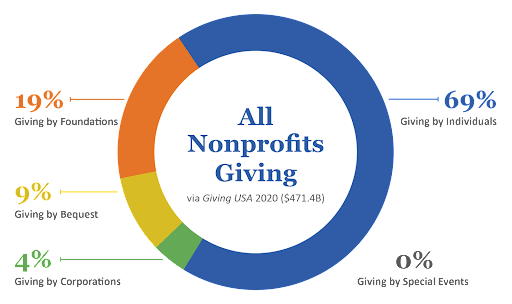Leading Nonprofit Firm: Aiding Charities and Organizations Achieve Their Objectives
Leading Nonprofit Firm: Aiding Charities and Organizations Achieve Their Objectives
Blog Article
Analyzing the Difficulties and Opportunities Dealt With by a Nonprofit Firm in Getting Its Mission and Objectives in Today's Society
In the current landscape, nonprofit companies are navigating a complex array of obstacles, such as rising and fall financing sources and enhanced competition for benefactor involvement. By examining how nonprofits can purposefully adjust to these dynamics, we can reveal not just the techniques they employ to overcome obstacles yet likewise the untapped capacity that lies within their functional frameworks.
Current Landscape for Nonprofits
The existing landscape for nonprofits is defined by a complex interaction of progressing funding designs, heightened competitors for donor focus, and boosting demands for accountability and openness. Nonprofit companies are increasingly diversifying their earnings streams to include gives, private donations, company sponsorships, and social business campaigns. This shift reflects a critical feedback to traditional funding resources becoming a lot more affordable and unforeseeable.
Additionally, the surge of digital communication systems has actually transformed exactly how nonprofits involve with potential contributors. Social media, crowdfunding, and on-line campaigns are currently important devices for reaching wider target markets, yet they also increase competitors among companies trying minimal resources. In this atmosphere, nonprofits need to refine their messaging to efficiently record the passion and dedication of advocates.
In addition, stakeholders are demanding greater openness regarding how funds are allocated and the measurable influence of nonprofit tasks. This trend requires that companies embrace robust liability actions, consisting of in-depth coverage and evaluation structures, to show their performance. Subsequently, the nonprofit market is navigating a landscape that needs innovative thinking, tactical adaptability, and a commitment to ethical techniques in order to grow in the middle of these dynamic challenges and possibilities.
Trick Difficulties Come Across
Navigating the nonprofit sector offers a myriad of obstacles that can impede organizational effectiveness and sustainability. Among one of the most important issues is the reliance on irregular financing sources. Nonprofits frequently depend on gives, donations, and government support, which can fluctuate significantly, bring about monetary instability and difficulties in long-term preparation.

Team retention and volunteer interaction posture further obstacles, as many nonprofits struggle to supply competitive incomes and advantages. The high turn over rates can interrupt business connection and affect service shipment.
Moreover, adapting to technical improvements and electronic transformation continues to be a difficulty for many nonprofits. A lack of resources and competence can protect against companies from leveraging innovation effectively, thus limiting their outreach and effectiveness.
Inevitably, these obstacles call for nonprofits to use strategic planning and innovative methods to preserve their objective and make certain sustainability in an intricate landscape. nonprofit agency.
Arising Opportunities
How can nonprofits harness emerging possibilities to improve their effect? In today's rapidly progressing landscape, nonprofits have the possibility to leverage technical innovations, changing social dynamics, and increased public recognition to advance their objectives.
Additionally, collaboration with businesses and various other sectors is coming browse this site to be a lot more prevalent, presenting nonprofits with accessibility to resources, know-how, and ingenious services. Collaborations can intensify efforts, drive community interaction, and produce lasting effects. Additionally, the expanding focus on corporate social duty provides nonprofits opportunities to straighten with organizations that prioritize social impact, obtaining monetary assistance and shared objectives.
The increasing concentrate on data-driven decision-making enables nonprofits to much better evaluate their programs and outcomes, enhancing liability and efficiency. By accepting these arising opportunities, nonprofits can not just strengthen their operational abilities but also increase their influence in addressing pressing societal concerns, ultimately driving purposeful change in their neighborhoods.
Techniques for Adaptation
Adjusting to a frequently altering setting is essential for nonprofits aiming to sustain their impact and effectiveness. To navigate the intricacies of modern-day culture, nonprofits must carry out tactical techniques that improve their durability and responsiveness.
One secret technique includes leveraging technology to expand and improve operations outreach. By utilizing digital systems, nonprofits can boost interaction with stakeholders, boost fundraising initiatives, and rise awareness of their goal. Additionally, embracing data-driven decision-making practices allows organizations to evaluate their programs' effectiveness and adjust strategies based upon empirical proof.
Partnership with other companies-- both for-profit and nonprofit-- can cultivate source sharing and technology. nonprofit agency. Partnerships can result in common proficiency, moneying chances, and expanded networks, eventually enhancing the cumulative effect
Additionally, growing a culture of flexibility within try this web-site the company is essential. Educating personnel to embrace modification and encouraging imaginative analytic can equip teams to react efficiently to emerging obstacles.
Situation Researches and Success Stories
Successful adjustment techniques in the not-for-profit market can typically be illustrated via engaging case research studies and success stories. One significant example is the "Feeding America" network, which changed its operations during the COVID-19 pandemic. By leveraging innovation and area partnerships, the company scaled its food circulation efforts to fulfill the unprecedented need, offering countless family members who dealt with food instability.
Another impactful instance is the "Boys & Girls Clubs of America," which adjusted its programs to a virtual style throughout lockdowns. By presenting online mentorship and appealing tasks, they preserved links with young people across the country, ensuring ongoing support and advancement in spite of the difficulties positioned by social distancing.
Likewise, the "Globe Wild Animals Fund" has actually successfully integrated community-based conservation techniques, empowering local populations to take part in wild animals security initiatives. This approach not only fosters community ownership but likewise improves environmental sustainability.
These situation research studies highlight just how nonprofits are not just addressing immediate obstacles but are also creating long-term solutions that align with their missions. By sharing such success stories, companies can influence others to introduce and adjust, eventually driving positive change within their communities.

Verdict
In conclusion, not-for-profit firms today navigate an intricate landscape characterized by economic instability, competition, and labor force challenges. Eventually, resolving both possibilities and challenges will certainly be crucial Going Here for nonprofits to meet their objectives and achieve long lasting influence in society.
In the present landscape, not-for-profit agencies are navigating an intricate range of obstacles, such as changing financing resources and enhanced competition for donor involvement. The nonprofit industry is browsing a landscape that needs cutting-edge reasoning, tactical versatility, and a dedication to moral practices in order to flourish in the middle of these vibrant obstacles and chances.
Browsing the not-for-profit field offers a myriad of obstacles that can hinder organizational effectiveness and sustainability.In conclusion, nonprofit agencies today navigate a complex landscape characterized by financial instability, competition, and workforce challenges. Ultimately, dealing with both chances and difficulties will certainly be critical for nonprofits to accomplish their missions and achieve lasting impact in culture.
Report this page